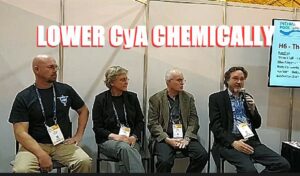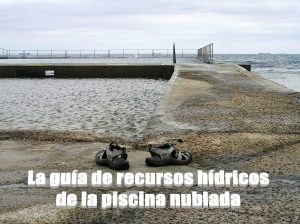In the last article, we spoke about some of the alternatives to muriatic acid that are available. But how cool would it be with the current scarcity of products if we didn’t need to adjust the pH in the first place? That’s actually not as far-fetched an option as it sounds. Okay, maybe not need an adjustment, but we can set up our water chemistry so that the need for acid occurs much less often. Establishing a Borate-Bicarbonate buffer system will allow us to do just that.
If it sounds familiar, it’s because we have mentioned this before in an article that gets hella deep into the chemistry behind the method, How Borates in Swimming Pools Buffer pH. But, the current state of the industry warrants bringing it up again. If we can ‘lock’ our pH in place, we won’t need as much acid, so it doesn’t matter that there isn’t any to be found.

Preventing a downward drift
A buffer is a chemical level that serves as the water’s ability to resist a change in pH. It does this by changing things that would raise or lower pH into something that won’t. Total Alkalinity (TA) is the one that you are probably most familiar with. Even though it buffers against both upward and downward drifts in pH, it does its best at resisting a pH drop.
1.4 pounds of sodium bicarbonate (Baking soda) will increase the Total Alkalinity of 10,000 gallons of water by 10 ppm
Sodium bicarbnate
Maintaining a cyanuric acid level (aka CyA; aka stabilizer; aka conditioner) will actually do the same. Though not as good as Total Alkalinity, CyA will help keep the pH from going up or down and does its best job as a buffer against a dip. Like I said initially, it won’t stop the pH level from moving, but it does make it much more difficult for it to go from point A to any other point on that 0 to 14 scale.
13 ounces weight of cyanuric acid will increase the CyA level of 10,000 gallons of water by 10 ppm
Cyanuric acid
Preventing an upward drift
Establishing a borate level will also buffer against a movement in either direction but excels in resisting an upward drift. Borate in water works similarly to Total Alkalinity in that it changes things that would drive the pH upward into something that won’t. Obviously, if the goal is to use much less acid, this is the level that is most important. But it’s the combination of the three that really keeps the pH in the acceptable range.
There are two different chemicals we can use to establish a borate level:
37 pounds of Borax will raise the borate level of 10,000 gallons of water by 50 ppm
– or –
23.75 pounds of Boric acid will raise the borate level of 10,000 gallons of water by 50 ppm
Boric acid
20 Mule Team Borax might be a lot easier to find. It is located in the laundry aisle of your local grocery store. But, it takes a lot higher of a dose and will jack up both your pH and TA, requiring a large dose of acid to rebalance. However, once rebalanced, it will pretty much stay in place.
Borate-Bicarbonate buffer system
Another cool thing about borates is that once a level is established, it does not dissipate or degrade. This is similar to calcium hardness, Total Dissolved Solids, and CyA. Unless you replace water by draining, it will maintain its level. You may find you have to tweak it slightly from time to time due to water loss from backwashing, bather drag out, or bather splash out. Of course, a pool with a leak will have difficulty maintaining a sufficient amount. This brings up a good point – if you are going to start using borates in your pool, you will need a borate test kit.
The best possible borate-bicarbonate buffer system you could set up in your pool would have the buffering trio at the following levels:
- Total Alkalinity of 80 to 100 ppm
- Cyanuric acid at 30 to 50 ppm
- Borate level of 30 to 50 ppm (do not exceed 50 ppm)







I have been converting my customers to this regime since the shortage in Chlorine tabs and granular shocks. It is also a Algaestat. Which basically from my understanding does not allow algae to grow at a lower Chlorine level. You can use less Chlorine and Muriatic Acid. The water looks and feels amazing. With all of this rain we have in Florida right now…my pools with Borates are beautiful and are not turning green and do not have algae. Awesome stuff!
Hey Debra! Thank you for reading. I have to say that I am becoming more and more of a borate fan lately. It definitely has its place in 2021.